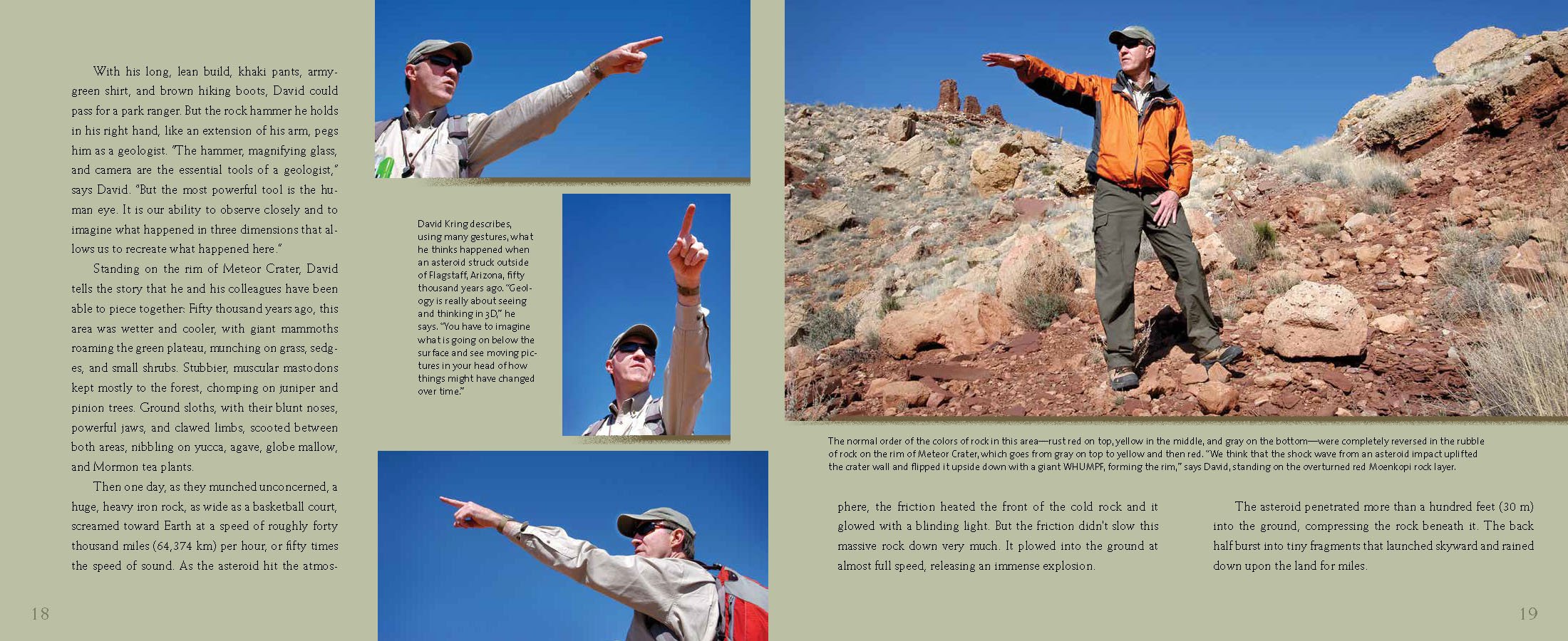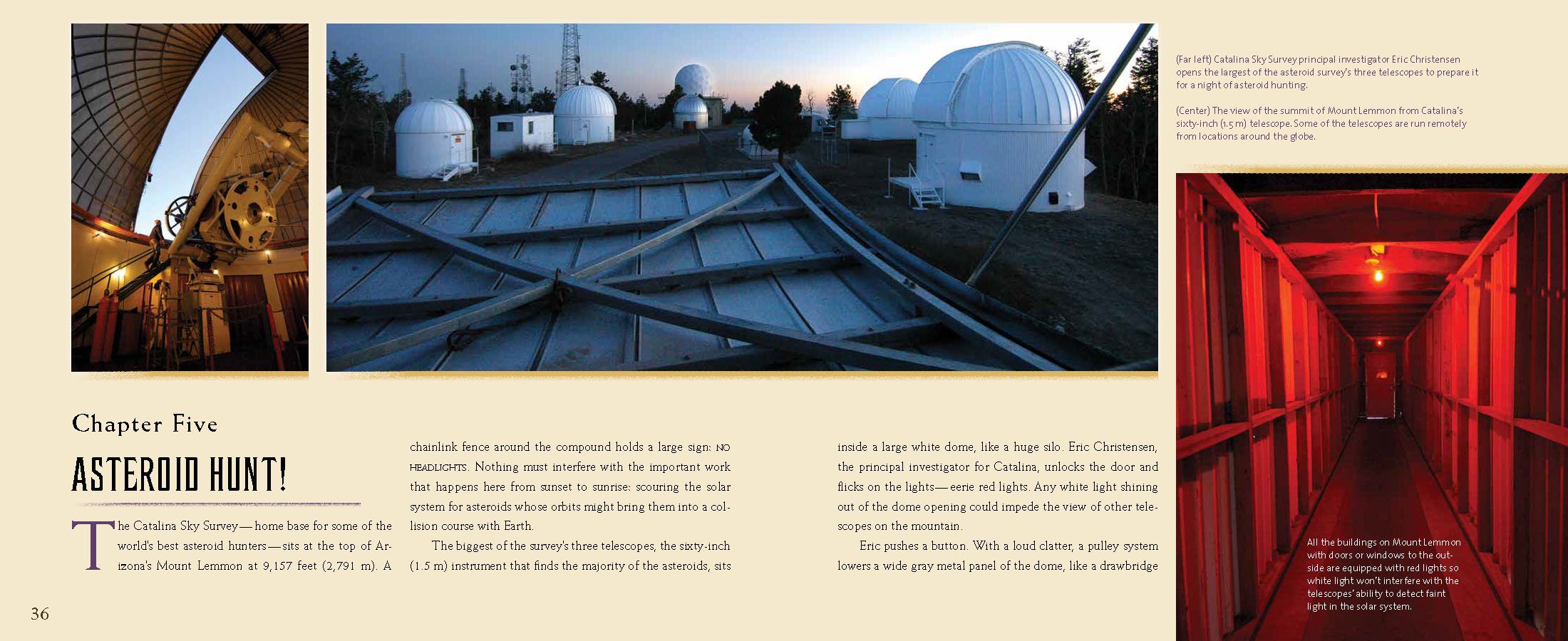Children’s Book Photography
One of my best memories is working on this book with author Elizabeth Rusch. We got a private tour of Meteor Crater with a NASA scientist, went on a hunt for meteorites after a documented hit, stayed up all night at the Mt. Lemmon observatory watching for near earth asteroids, met so many amazing planetary scientists, and found ourselves looking into an infrared camera at Pasadena’s Jet Propulsion Laboratory. From all these experiences came this wonderful book.
Role: Photographer
“Lavishly illustrated with Anderson’s photographs.”
— Kirkus
RECOGNITION
AAAS/Subaru Prize for Excellence in Science Books
Best Book of 2017 by School Library Journal
ALA (American Library Association) Notable
Bank Street Best Book of the Year
Junior Library Guild selection
The author and I hiked all day in a vast California ranch with a group of meteorite hunters and scientists looking for fragments after a known fall. Along the way we avoided herds of dangerous wild boar and deep boggy mud, but even after our long day of hunting, we didn’t find any meteorites.
I was wearing old hiking boots. A NASA scientist had flown up from Houston to meet us and show us around the crater. We got about half way around when one of the soles of my boots literally fell off. I took another step and the second one fell off, too. There was no more shooting that day. This shot is from the second day after I went and bought new boots.
The scientist, David Kring, needed to point out lots of things in the area. This got kind of funny to shoot after a while. I came up with the idea for the book of using him as a graphic element as he pointed in various directions. While it goes against one of my picture editing “rules” of not using literal images, which are depicting action and have no other redeeming value, rules can be broken if you have a purpose for doing so. In this case, turning him into a weathervane broke up the text, and provided a little visual comic relief.
This was the observatory at Mt Lemmon. We stayed up most of the night to document the process of searching for near earth asteroids, which might one day smash into the earth. The red light used in the tunnel back to the bunker is the only color light, which does not interfere with the night sky and the telescope’s ability to “see.” I ended up running out of things to shoot, so I went back to the bunker earlier than the author, but I was warned to make a lot of noise as I walked back — because of all the mountain lions! Obviously, they didn’t get me.
What People Are Saying
“The accompanying photos and graphics are both informative and appealing. Compelling reading.”
— School Library Journal, ★ Starred Review ★
"Accompanied by photographs of scientists in action and requisite space shots, the book concludes with citizen science connections and resources, and is sure to have an impact on young astronomers."
— Booklist
“Fascinating…vivid…excellent.” “…vivid photographs…”
— The Horn Book





